In technology, being connected is very important. Two major players in this arena are Thunderbolt 4 and USB-C. Both offer impressive features, but they serve different needs. Understanding their differences can help you make smart choices.
Thunderbolt 4 is the newest way to transfer data quickly and connect devices. It promises faster speeds and more robust features. Meanwhile, USB-C is popular because it is flexible and used by many devices.
This article will explain the main differences between Thunderbolt 4 and USB-C. We'll cover their features, benefits, and best uses. By the end, you'll know which technology suits your needs best.
USB-C has become the go-to connector for many devices today. Its design is elegant and reversible, allowing easy plug-in from either direction. This feature minimizes wear and tear on both the port and the cable.
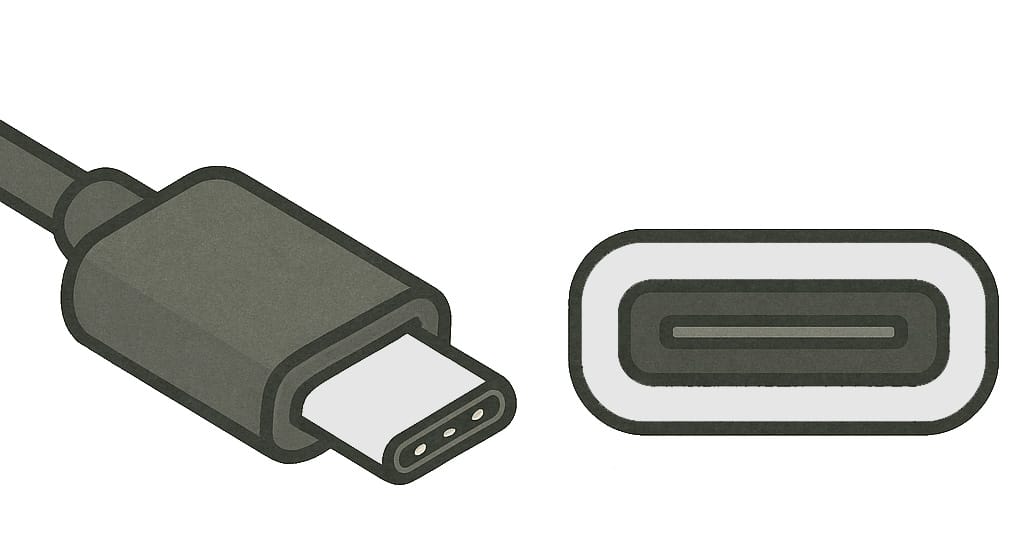
USB-C is known for being very flexible. It handles data transfer, charging, and video output seamlessly. This flexibility makes it a popular choice for a wide array of gadgets, from smartphones to laptops.
The USB-C standard encompasses multiple specifications, which can be confusing. Versions like USB 3.1 and USB 3.2 differ in speed and capabilities.
Here are some key points:
USB-C is popular, cheap, and can do a lot of different tasks. Its role in changing tech systems is important and shows it will keep growing.
Thunderbolt 4 is the pinnacle of the Thunderbolt interface. Launched as an upgrade over its predecessors, it brings numerous enhancements. This version ensures good performance and a dependable experience on all devices.
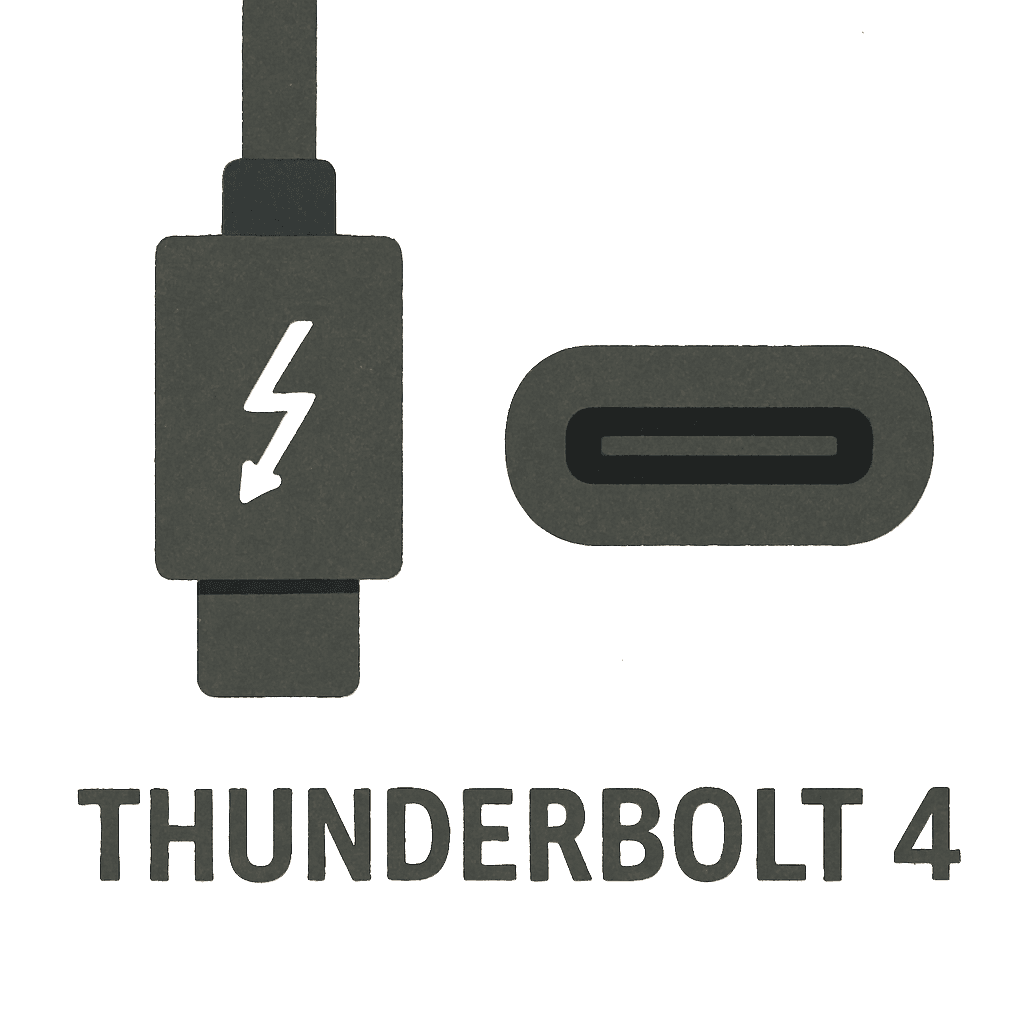
One notable feature of Thunderbolt 4 is its consistent 40 Gbps data transfer rate. Unlike USB-C, which varies, Thunderbolt 4 remains stable. It's great for tasks that need fast internet.
Beyond just speed, Thunderbolt 4 supports dual 4K displays or a single 8K display. It offers extensive video output capabilities for those in video production or gaming. It also works well with PCIe data transfers, which are important for fast storage and external GPUs.
Key benefits of Thunderbolt 4 include:
For power users and tech enthusiasts, Thunderbolt 4 provides advanced capabilities. Its features make it great for work places. It helps with getting things done and being efficient.
Thunderbolt 4 and USB-C often get confused, but they have key differences. Thunderbolt 4 offers better performance and features compared to standard USB-C implementations. The actual speed is determined by how it's built.
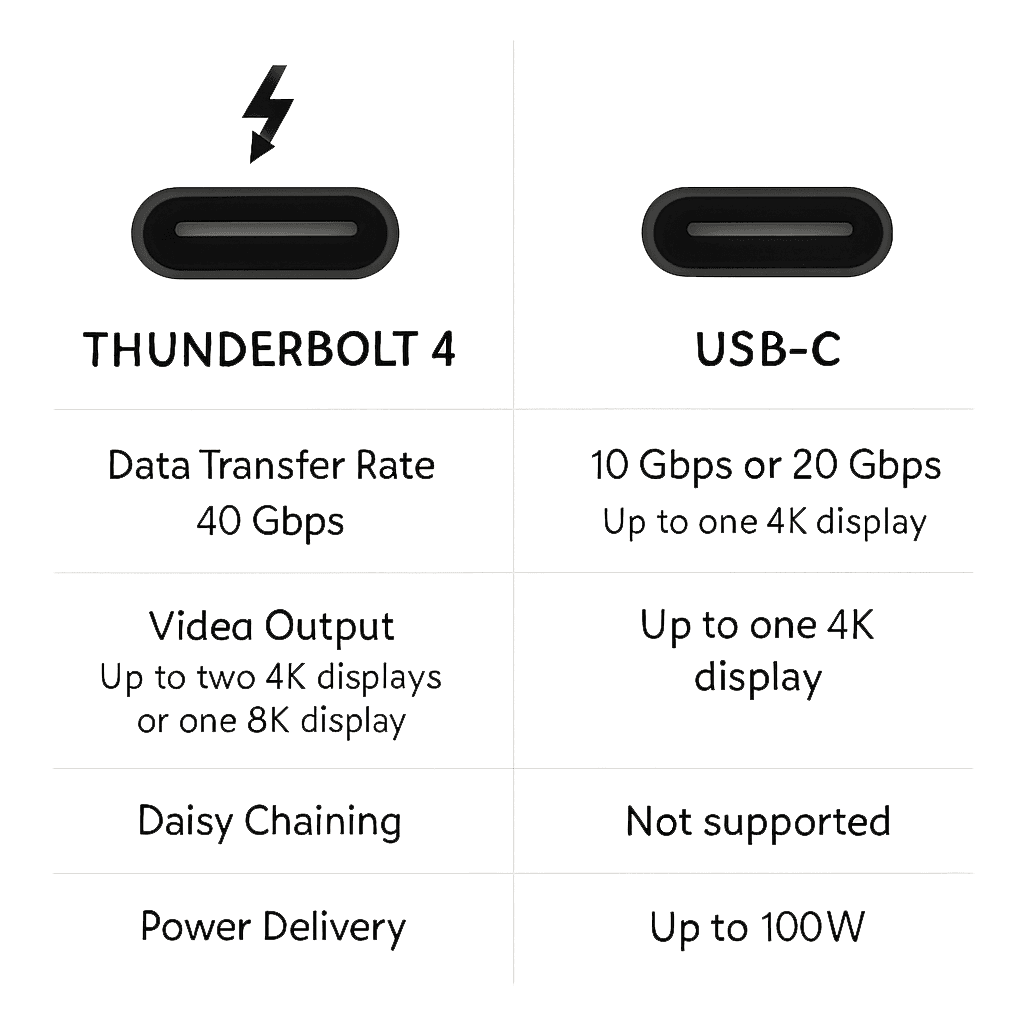
One fundamental difference is speed. Thunderbolt 4 consistently delivers data transfer speeds of 40 Gbps. In contrast, USB-C speeds vary based on the standard, like USB 3.1 or USB 3.2.
Another distinction is display support. Thunderbolt 4 can handle dual 4K displays seamlessly. USB-C's support depends on its specific version and and how it's implemented.
For cables, Thunderbolt 4 ones must support full performance over 2 meters. USB-C cables vary greatly in length and capabilities, depending on their version.
Here's a brief comparison list:
Knowing these differences helps you make an informed choice, making sure your device's needs match the right technology.
Data transfer speed is a big factor when picking between Thunderbolt 4 and USB-C. Thunderbolt 4 consistently supports up to 40 Gbps. This makes it ideal for high-demand scenarios.
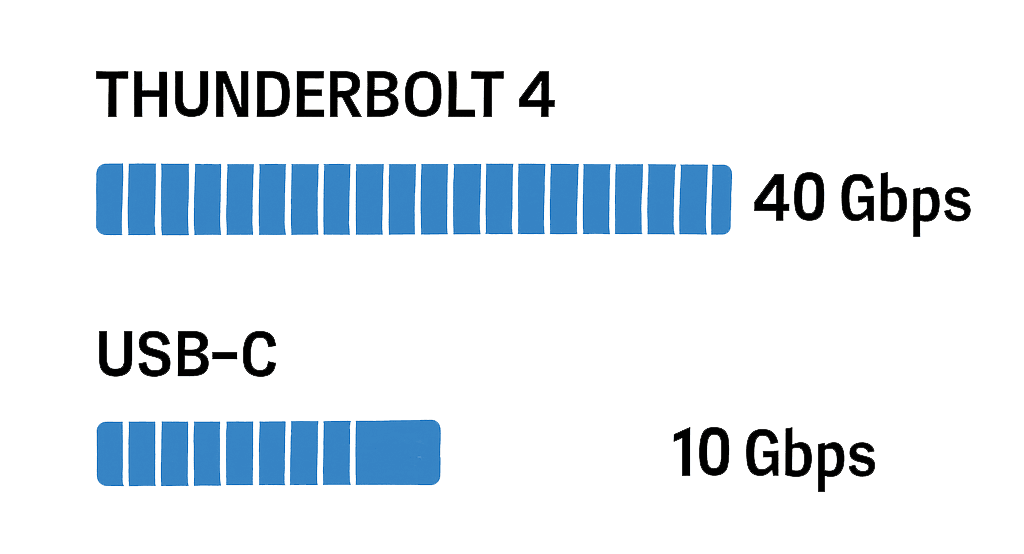
USB-C speeds can vary greatly. Versions like USB 3.1 offer 10 Gbps, while USB 3.2 Gen 2x2 can reach 20 Gbps. The support for USB-C depends on its version and how it is used.
To summarize the key speed differences:
Thunderbolt 4 caters to tasks needing rapid data transfer, like editing high-resolution videos. USB-C is good for daily use and is popular because it can do many things. Choosing the right option depends on how fast you need it to be and if it works with your device.
Video output varies a lot between Thunderbolt 4 and USB-C. Thunderbolt 4 can handle two 4K displays or one 8K display. This makes it a top choice for demanding visual tasks.
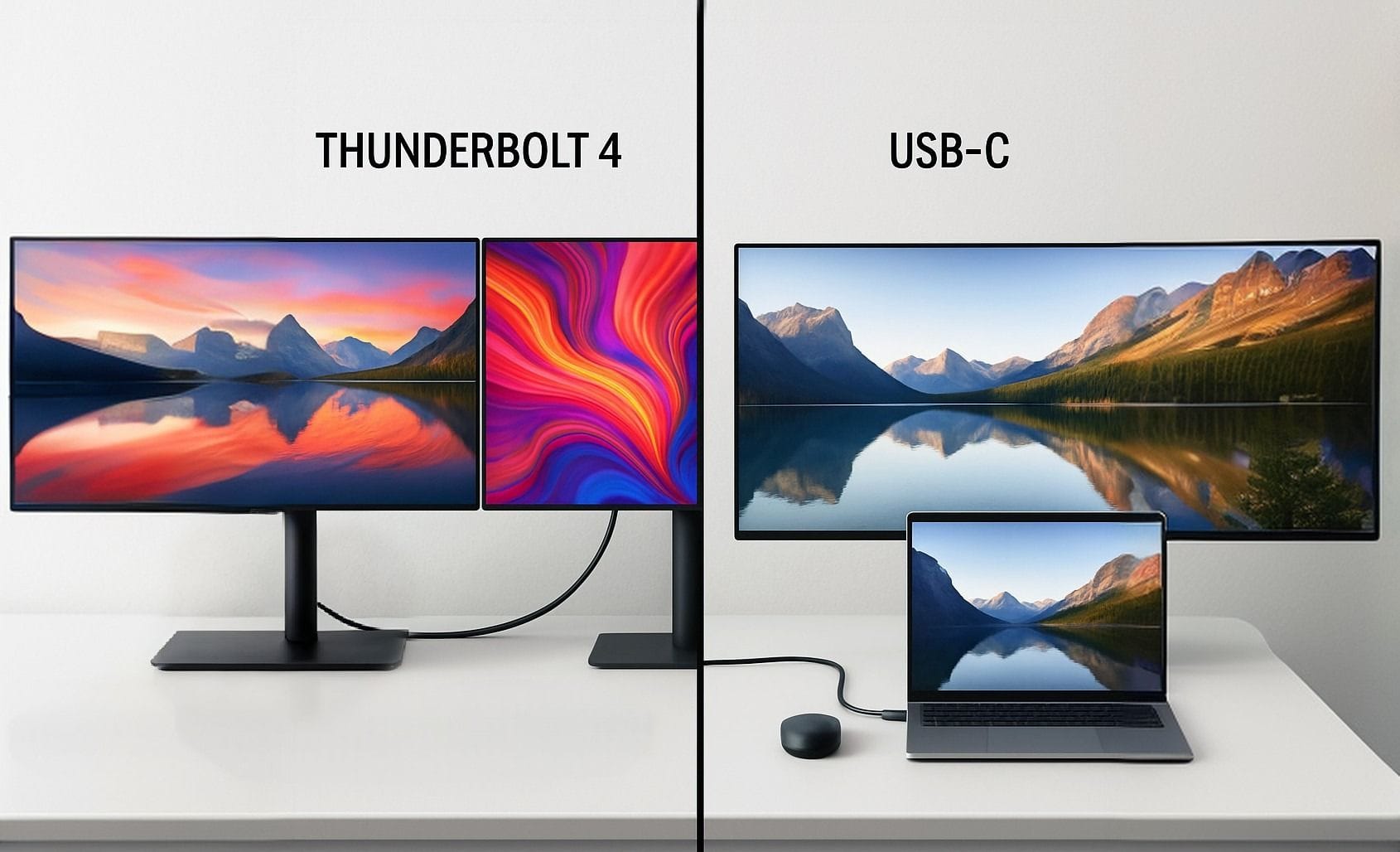
To highlight the main video differences:
When choosing between them, think about your display needs, especially if you need multiple high-resolution screens.
One of the standout features of both USB-C and Thunderbolt 4 is their ability to deliver power. USB-C is favored for its efficient charging capabilities, widely supporting power delivery across numerous devices.
Thunderbolt 4 takes this a step further by ensuring at least one port can charge a laptop and support wake-from-sleep functionality. This added guarantee makes things more reliable for power users.
Key capabilities to consider:
Thunderbolt 4 ports are fully compatible with USB-C devices, ensuring seamless connection across a variety of gadgets. However, not all USB-C ports support Thunderbolt 4 features, which can affect functionality.
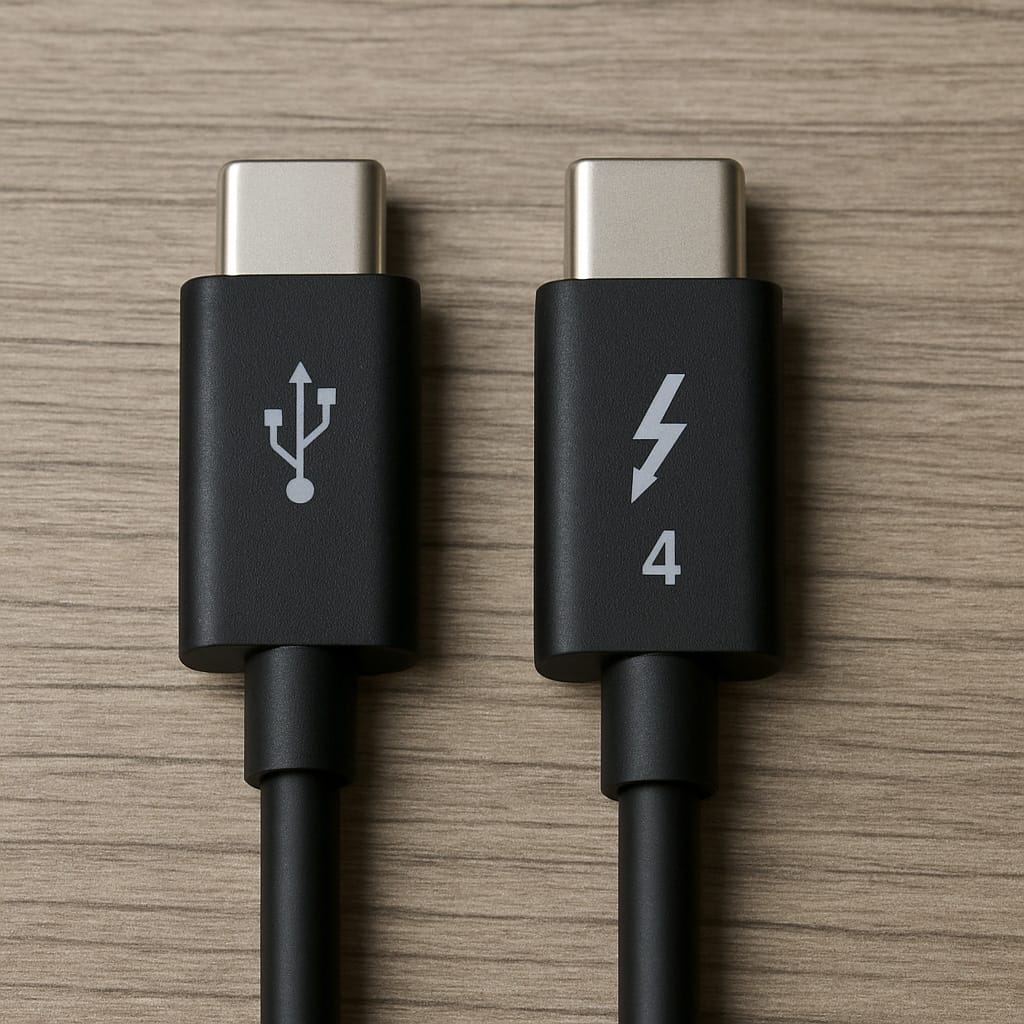
When it comes to cables, Thunderbolt 4 requires them to be at least 2 meters long while maintaining full performance.
USB-C cables come in different lengths and performance levels. This can cause some confusion.
Key points:
Security is a core part of Thunderbolt 4, which includes Intel VT-d-based DMA protection. This keeps devices safe from attacks that access memory directly, making data safer for users.
Certification is important for Thunderbolt 4 devices. It helps make sure they work well and are compatible with other devices. USB-C doesn't have such strict rules for certification, which can lead to different experiences.
Key security and certification points:
Thunderbolt 4 and USB-C appear in many tech gadgets today. Devices like modern laptops, desktops, and docking stations often feature both port types. They cater to users with varied technical needs.
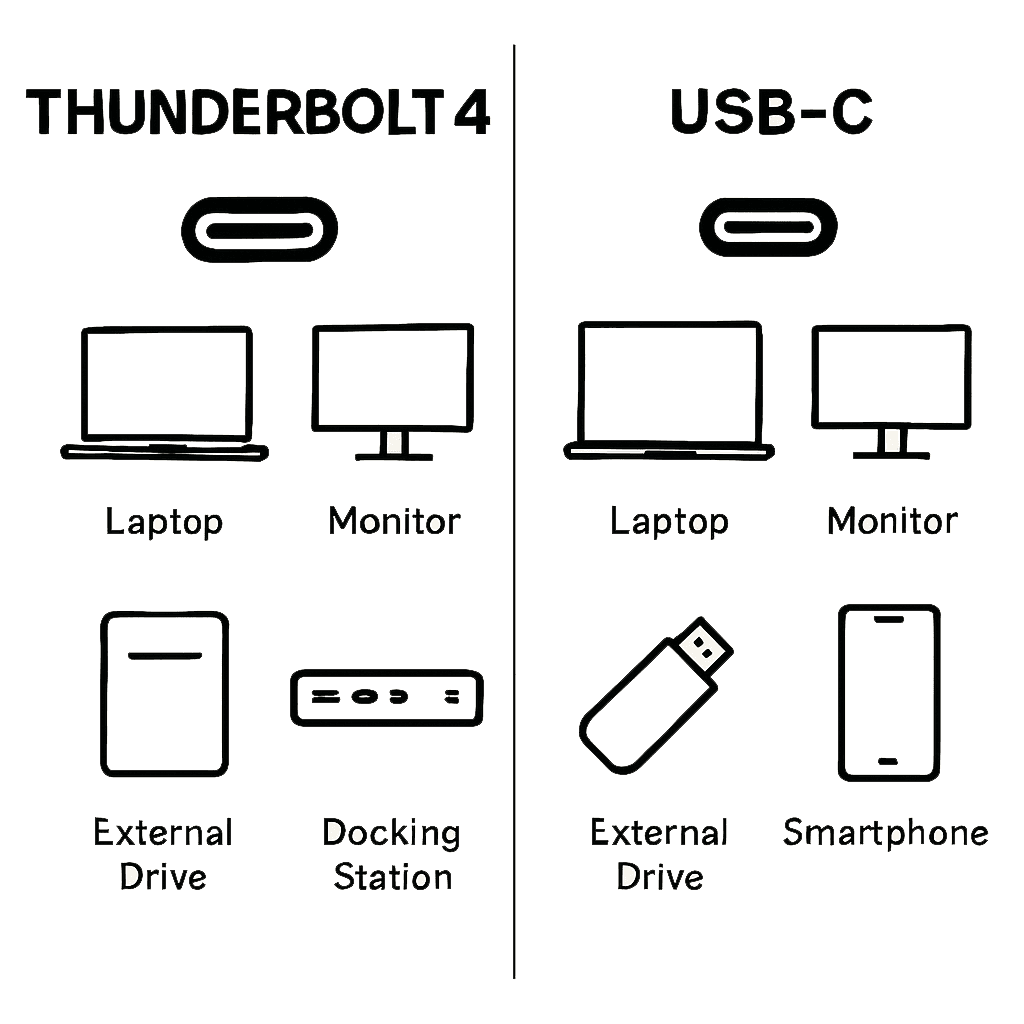
Consider these examples:
These technologies connect things well and play nice with all sorts of gadgets.
Choosing between Thunderbolt 4 and USB-C depends on individual needs and tasks. Thunderbolt 4 offers robust performance, ideal for creative professionals and gamers needing high-speed data and video output.
If you want to save money, USB-C works with many devices and is very flexible. It's good enough for everyday tasks like charging and basic data transfer. Its universal nature supports many devices, including laptops and smartphones.
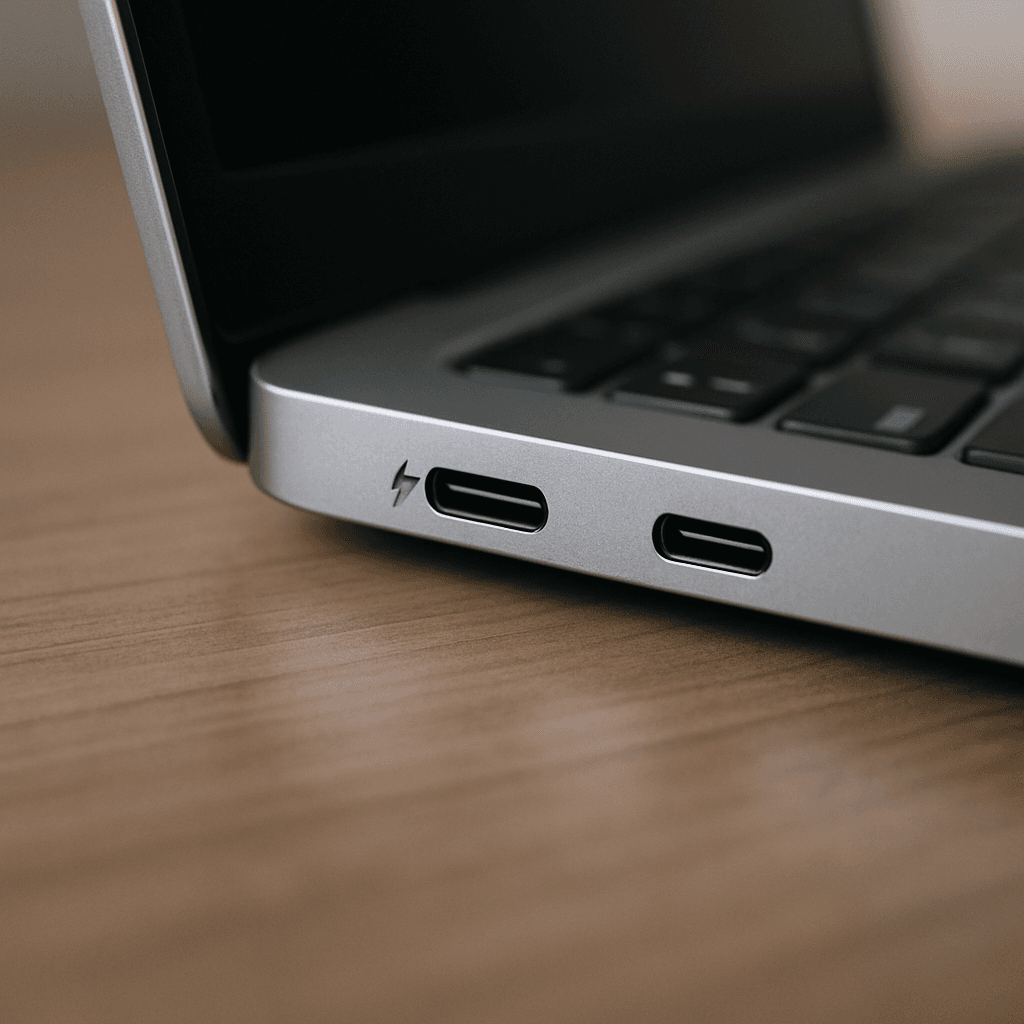
Consider these pointers when deciding:
When selecting, think about your daily workflow and connection demands. Both standards have their strengths, so the choice will fit the user's tech needs.
Choosing between Thunderbolt 4 and USB-C depends on your specific needs. Thunderbolt 4 is perfect for those who need fast data transfers and advanced display options.
For most people, USB-C is fast and flexible enough. Its widespread adoption makes it a practical choice for everyday use across many devices.
Ultimately, the choice comes down to your budget and what performance you need. If cutting-edge technology and speed are priorities, Thunderbolt 4 is the way to go. However, for cost-conscious users, USB-C remains a reliable and adaptable option.